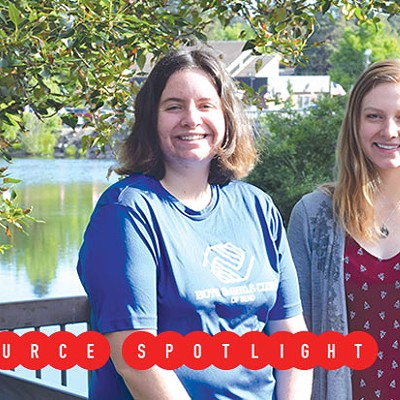[
{
"name": "Air - Ad - Rectangle - 2 pack - Inline Content - 1",
"insertPoint": "1/2",
"component": "16844684",
"requiredCountToDisplay": "6"
}
,{
"name": "Air - Ad - Rectangle - 2 pack - Inline Content - 2",
"insertPoint": "1/4",
"component": "16844686",
"requiredCountToDisplay": "20"
},{
"name": "Air - Ad - Rectangle - 2 pack - Inline Content - 3",
"insertPoint": "3/4",
"component": "16844687",
"requiredCountToDisplay": "17"
}
]
It was impossible to turn on the news or look at Facebook/Twitter feeds last month without news of NFL player Ray Rice knocking out his fiancée in a hotel elevator. The release of the videotape started a mass social media blitz #WhyIStayed, #WhyILeft where survivors of domestic violence spoke out about their choices. It seemed that everyone had an opinion on the matter, yet not all were founded on facts, and many perpetuated the myths involved in domestic and intimate partner violence.
If for some reason you abstained from all media last month, here is a very brief recap of the story. Ray Rice was seen on surveillance footage knocking out his then fiancée Janay Palmer and dragging her unconscious body out of a hotel elevator on February 15 of this year. In July, the couple held a dual press conference at the Baltimore Ravens training camp stating that they share the blame for the elevator incident. Janay continues to defend her now husband, telling ESPN “I love my husband. I support him.” Even though the NFL has indefinitely suspended him from the league, much more needs to be done to end domestic violence. Doing so requires an understanding of what domestic violence is, and myths surrounding the topic.
A woman is battered by her partner every 9 seconds in the United States. The FBI estimates it will happen to one out of every two women in their lifetime in this country. According to the Oregon Health Authority, one in four homicides are from intimate partner violence. These statistics are alarming, yet they are only in regards to battery and homicide. Domestic violence is a broad term, which refers to any number of ways one person controls another in a relationship. Domestic violence may include physical violence as is the Rice case, but also victims may be abused verbally, emotionally, and psychologically. A domestic assault is often part of a much larger problem in the relationship based on control, coercion, and intimidation.
There are many myths prevalent in our society about domestic violence. In honor of Domestic Violence Awareness Month, let’s bust a few of them.
MYTH: All abusers are men/low-income/etc.
REALITY: It is important to note that not all survivors of domestic violence are women, and that not all abusers are men. Another myth is that it happens only in poorer neighborhoods. Domestic violence happens to people of all genders, socioeconomic classes, education levels, and races.
MYTH: Victims provoke the violence.
REALITY: In Janay Rice’s case, she stated that they share the blame for the abuse. Victims do not provoke their partners’ violence; they are never to blame for the violent act of their partner. Domestic violence is not an isolated event. Abuse usually escalates in frequency and intensity over time. The idea that the victim can change the partner is a myth.
MYTH: Drug and alcohol abuse cause domestic violence.
REALITY: Granted, the use of mind-altering substances can intensify already existing controlling behavior, but the excuse by abusers claiming loss of control due to alcohol or drug abuse is false.
MYTH: Attending anger management classes or couples counseling can help “fix” an abusive relationship.
REALITY: Anger management theory suggests the reason abusers batter it through provocation, while couples counseling places the blame on both partners. It implies there can be a quick fix, and diffuses the responsibility of the abuser while misrepresenting the depth of the problem. Batterers need to learn to take responsibility for their own behavior and can learn non-violent ways to act and communicate. Domestic violence is not a momentary loss of temper. It is an establishment of control and fear in a relationship very often based n the belief of entitlement.
Violence is a choice, justified by social norms and reinforced by oppression. There needs to be a constant message from society that oppression is unacceptable. The #WhyIStayed/#WhyILeft campaign created much commentary on why Jany Rice would marry her abuser. It is a myth that if a battered women wanted to leave the relationship she could. Victims frequently defend and stay with their abusers. It is hard to grasp that someone you love has the capacity for such cruelty. Fear is a major deterrent to leaving. 75 percent of fatalities and serious injuries occur within the two weeks after leaving the relationship. In addition, economic dependence, religious beliefs, lack of resources, social stigma, and feeling of low self-worth and isolation all impact a persons choice to leave.
Survivors may deny or minimize the impact of the experience as a coping strategy. They may waver between denial and acceptance as they have feelings of disempowerment and disconnection. Survivors need to have their stories validated with unconditional positive support. They need to plan for their safety. They need to start to recognize their own power to begin to heal. Survivors need to have respect for their autonomy and confidentiality. Unfortunately in the case of Janay Rice, this was all done in the public eye. It has however been used as a platform to begin the discussion of domestic violence, which is a positive choice to ending the stigma surrounding the topic. With more education can empowerment and social change begin. As a society we have an obligation to stand up for those that need us, and be as non-judgmental as we can possibly be, while providing support and listening to the abused.
If you or someone you know needs help, Saving Grace provides comprehensive family violence and sexual assault services, and promotes the value of living life free from violence.
24-Hour Hotline: 541-389-7021
Outside Bend: 866-504-8992
Kimberly Richards is a rape and domestic violence advocate for Saving Grace, mostly focusing on Hospital Response Team work. She is a local yoga therapist and meditation teacher. She has a bachelors degree from Evergreen State college in marine ecology and is currently pursuing a degree in psychology at OSU.
If for some reason you abstained from all media last month, here is a very brief recap of the story. Ray Rice was seen on surveillance footage knocking out his then fiancée Janay Palmer and dragging her unconscious body out of a hotel elevator on February 15 of this year. In July, the couple held a dual press conference at the Baltimore Ravens training camp stating that they share the blame for the elevator incident. Janay continues to defend her now husband, telling ESPN “I love my husband. I support him.” Even though the NFL has indefinitely suspended him from the league, much more needs to be done to end domestic violence. Doing so requires an understanding of what domestic violence is, and myths surrounding the topic.
A woman is battered by her partner every 9 seconds in the United States. The FBI estimates it will happen to one out of every two women in their lifetime in this country. According to the Oregon Health Authority, one in four homicides are from intimate partner violence. These statistics are alarming, yet they are only in regards to battery and homicide. Domestic violence is a broad term, which refers to any number of ways one person controls another in a relationship. Domestic violence may include physical violence as is the Rice case, but also victims may be abused verbally, emotionally, and psychologically. A domestic assault is often part of a much larger problem in the relationship based on control, coercion, and intimidation.
There are many myths prevalent in our society about domestic violence. In honor of Domestic Violence Awareness Month, let’s bust a few of them.
MYTH: All abusers are men/low-income/etc.
REALITY: It is important to note that not all survivors of domestic violence are women, and that not all abusers are men. Another myth is that it happens only in poorer neighborhoods. Domestic violence happens to people of all genders, socioeconomic classes, education levels, and races.
MYTH: Victims provoke the violence.
REALITY: In Janay Rice’s case, she stated that they share the blame for the abuse. Victims do not provoke their partners’ violence; they are never to blame for the violent act of their partner. Domestic violence is not an isolated event. Abuse usually escalates in frequency and intensity over time. The idea that the victim can change the partner is a myth.
MYTH: Drug and alcohol abuse cause domestic violence.
REALITY: Granted, the use of mind-altering substances can intensify already existing controlling behavior, but the excuse by abusers claiming loss of control due to alcohol or drug abuse is false.
MYTH: Attending anger management classes or couples counseling can help “fix” an abusive relationship.
REALITY: Anger management theory suggests the reason abusers batter it through provocation, while couples counseling places the blame on both partners. It implies there can be a quick fix, and diffuses the responsibility of the abuser while misrepresenting the depth of the problem. Batterers need to learn to take responsibility for their own behavior and can learn non-violent ways to act and communicate. Domestic violence is not a momentary loss of temper. It is an establishment of control and fear in a relationship very often based n the belief of entitlement.
Violence is a choice, justified by social norms and reinforced by oppression. There needs to be a constant message from society that oppression is unacceptable. The #WhyIStayed/#WhyILeft campaign created much commentary on why Jany Rice would marry her abuser. It is a myth that if a battered women wanted to leave the relationship she could. Victims frequently defend and stay with their abusers. It is hard to grasp that someone you love has the capacity for such cruelty. Fear is a major deterrent to leaving. 75 percent of fatalities and serious injuries occur within the two weeks after leaving the relationship. In addition, economic dependence, religious beliefs, lack of resources, social stigma, and feeling of low self-worth and isolation all impact a persons choice to leave.
Survivors may deny or minimize the impact of the experience as a coping strategy. They may waver between denial and acceptance as they have feelings of disempowerment and disconnection. Survivors need to have their stories validated with unconditional positive support. They need to plan for their safety. They need to start to recognize their own power to begin to heal. Survivors need to have respect for their autonomy and confidentiality. Unfortunately in the case of Janay Rice, this was all done in the public eye. It has however been used as a platform to begin the discussion of domestic violence, which is a positive choice to ending the stigma surrounding the topic. With more education can empowerment and social change begin. As a society we have an obligation to stand up for those that need us, and be as non-judgmental as we can possibly be, while providing support and listening to the abused.
If you or someone you know needs help, Saving Grace provides comprehensive family violence and sexual assault services, and promotes the value of living life free from violence.
24-Hour Hotline: 541-389-7021
Outside Bend: 866-504-8992
Kimberly Richards is a rape and domestic violence advocate for Saving Grace, mostly focusing on Hospital Response Team work. She is a local yoga therapist and meditation teacher. She has a bachelors degree from Evergreen State college in marine ecology and is currently pursuing a degree in psychology at OSU.


























